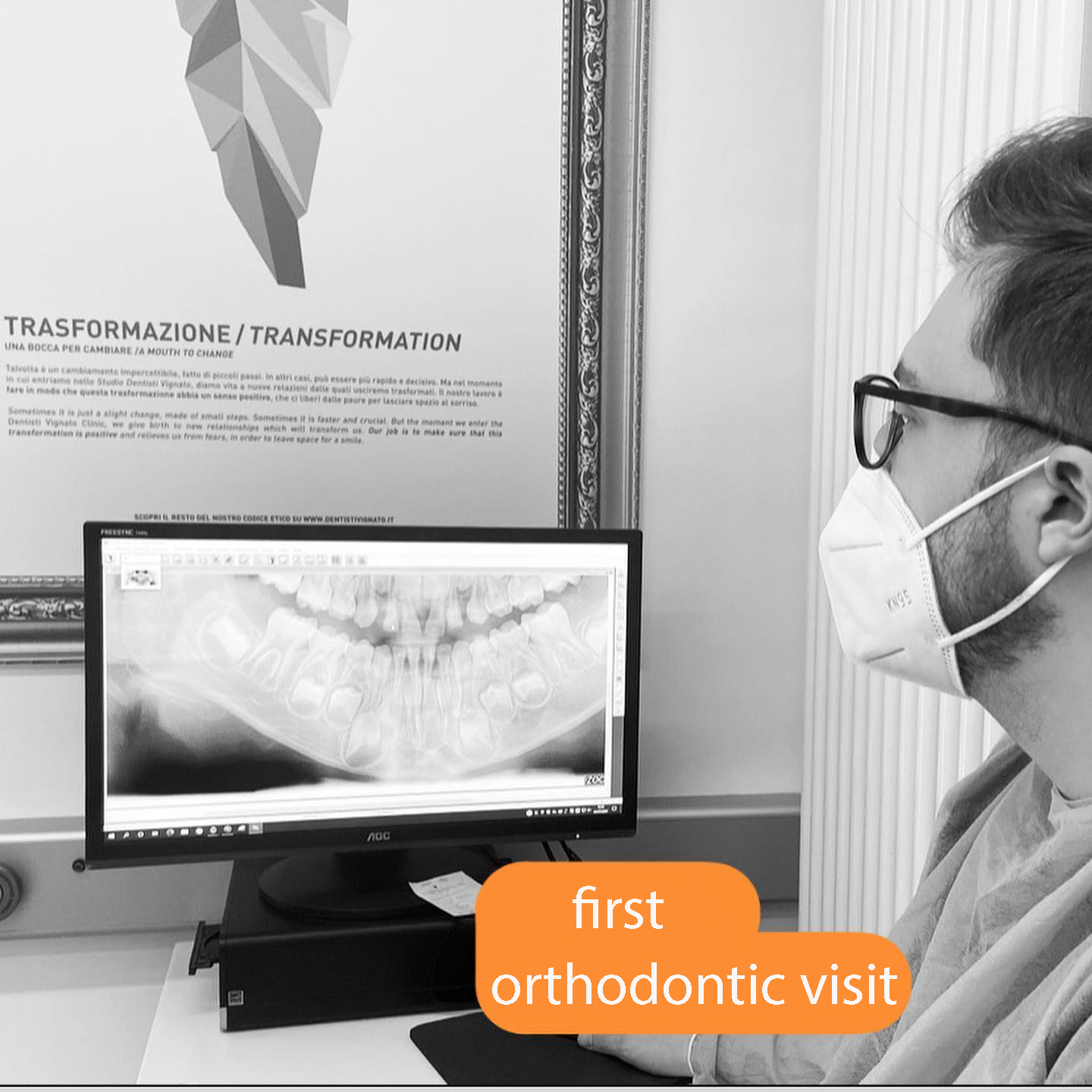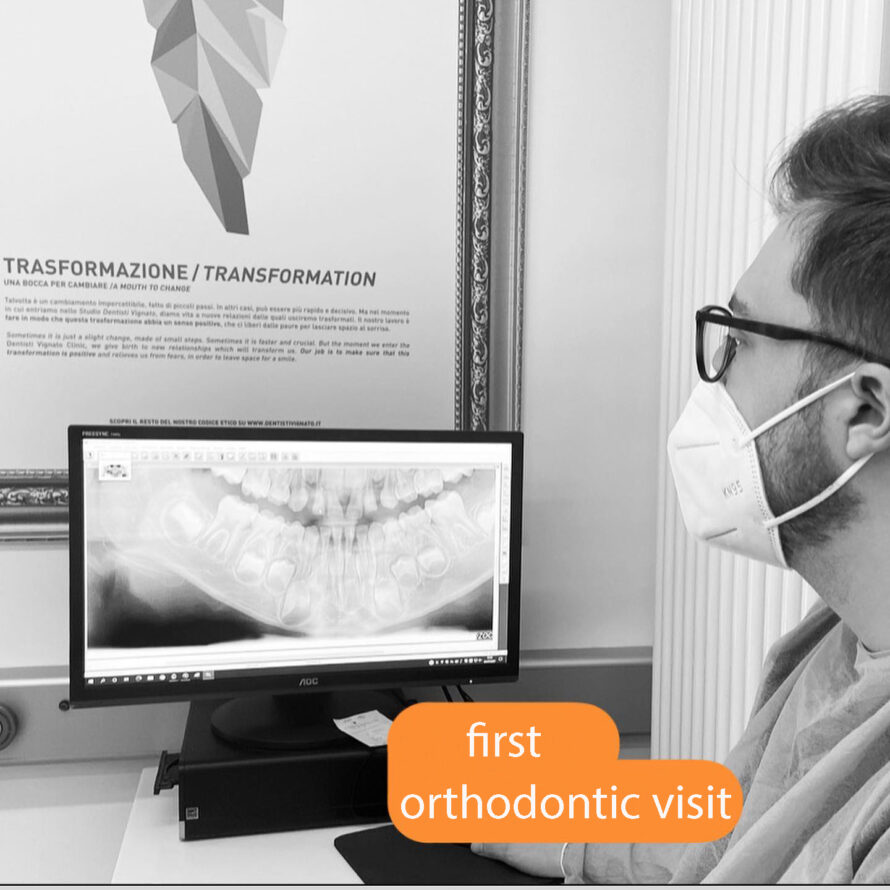
We suggest to carry out the first orthodontic visit Starting from the completion of baby teeth, and within 7 years of age. Within this period of time it is still possible to intercept and solve some malocclusions in the correct way.
An early check-up when baby teeth are still present can make a difference and make some therapies simpler. In some cases, the results obtained during this phase would not otherwise be reached once the bone growth has been completed.
Indeed, the orthodontist can:
- Correct bad habits if present (thumb sucking, pacifier, oral breathing…)
- Reduce the risk of traumas on front teeth, if protruding
- “Guide” the bone growth and the position of permanent teeth correctly
- Improve the closing of the lips
- Improve dental aesthetics
During the 1st orthodontic visit, the doctor will evaluate many aspects and the panorex X-ray, possibly together with the teleradiography, will provide important information for the case study.
In addition to the development of the face (skeletal growth of the palate and mandible), the orthodontist will evaluate the teeth position (malocclusion and disalignment) and the breathing (oral, nasal, snoring and sleep apneas).
The orthodontist will also look at other important elements, such as:
- swallowing
- phonation
- functioning of temporomandibular joints (correct mouth opening, noises, etc..)
- length of the labial and the lingual frenula and tongue mobility
- dental development and possible presence of dental agenesis (lack of teeth) or supernumerary teeth (extra teeth)
He will also evaluate the presence of parafunctions such as: thumb or pacifier sucking, prolonged use of the baby bottle, teeth grinding or clenching.
On this occasion the orthodontist will also take into consideration the general health of the mouth. This analysis is preparatory to provide food recommendations, indications on oral hygiene and on the treatment of any cavities. The goal is to preserve baby teeth for as long as possible. We remind that baby teeth are essential for the maintenance of the correct position of neighboring teeth.
However, we would like to clarify a point because an early orthodontic visit does not mean taking immediate action with an orthodontic treatment. Each malocclusion has its right moment to be treated. When a very young patient has a malocclusion which does not require immediate intervention, he/she is inserted into a monitoring protocol every 6/12 months in order to wait for the most suitable time.
The outcome of the first orthodontic visit usually leads to three different scenarios:
- The occlusion is correct and does not need any treatment, just check-ups scheduled over time.
- There is a dental malocclusion which requires monitoring over time and planning for future therapy.
- There is a dental and skeletal malocclusion which requires an early treatment, in order to avoid an alteration in the development of facial and skull bones.
Have you not booket the first orthodontic visit for your kid yet? Don’t wait too long, call us!
